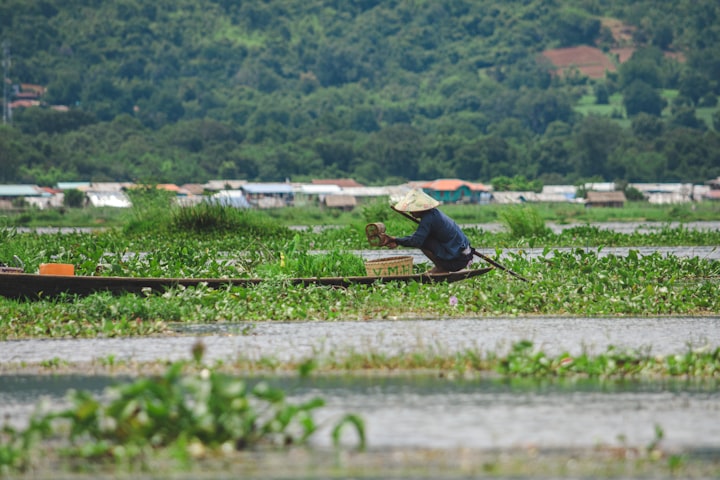The largest coffee producing countries in the world
Coffee,

Coffee, the lifeblood for many mornings (and afternoons!), is a global beverage enjoyed by billions. But where does this magical elixir come from? This journey takes us around the world, exploring the top coffee-producing countries and delving into the fascinating world of bean cultivation, processing, and the factors that influence each region's unique coffee profile.
The Big Five: Leading the Coffee Charge
Brazil: The Undisputed King (35% of Global Production)
Brazil reigns supreme in the coffee kingdom, accounting for a staggering 35% of the world's coffee production. Its ideal climate, fertile soil, and vast plantations make it a powerhouse in the industry. The dominant coffee variety grown in Brazil is Arabica, known for its smooth, balanced flavor. Most Brazilian coffee is processed using the natural method, where the coffee cherries are dried whole, resulting in a sweet and clean cup.
However, some regions in Brazil are experimenting with different processing techniques like pulped natural and washed, leading to more complex flavor profiles. While some criticize Brazilian coffee for being less complex, its consistency, affordability, and versatility make it a staple ingredient in many coffee blends.
Vietnam: Rising Star in the East (17% of Global Production)
Vietnam, a relative newcomer compared to other coffee giants, has rapidly climbed the ranks to become the second-largest coffee producer globally, accounting for around 17% of production. The country's success story is largely attributed to the Robusta coffee bean, known for its higher caffeine content and a bolder, more intense flavor.
Grown in the Central Highlands, Vietnamese Robusta is often used in instant coffee production due to its high yield and affordability. However, specialty coffee producers are starting to showcase the unique characteristics of Vietnamese Robusta, highlighting its natural sweetness and chocolatey notes.
Colombia: The Land of Enchanting Beans (10% of Global Production)
Colombia, famed for its high-quality Arabica beans, holds the prestigious title of the world's third-largest coffee producer (around 10% of global production). Colombian coffee is renowned for its well-balanced taste, with notes of bright acidity, sweetness, and a hint of fruitiness. This exceptional quality is attributed to the ideal growing conditions in the Colombian Andes, where volcanic soil and consistent temperatures contribute to the development of complex flavors in the beans.
Colombia is also known for its meticulous processing methods, with the washed method being the most common. This method removes the fruit flesh from the beans before drying, resulting in a cleaner and brighter cup. Colombian coffee is a favorite among specialty coffee enthusiasts who appreciate its unique and nuanced flavor profile.
Indonesia: Archipelago of Aromatic Beans (6% of Global Production)
Indonesia, a beautiful archipelago nation, boasts a rich coffee heritage and contributes around 6% to the world's coffee production. The country cultivates a diverse range of coffee varieties, including Arabica, Robusta, and Liberica, each contributing unique flavors to the Indonesian coffee experience.
Sumatra Mandheling, a full-bodied Arabica coffee with earthy and spicy notes, and Java Robusta, known for its intense strength and chocolatey flavor, are some of the most recognizable Indonesian coffees. Traditionally, Indonesian coffee is processed using the wet-hulled method, also known as Giling Basah, which results in a distinctive earthy flavor with a hint of herbal notes.
Ethiopia: The Birthplace of Coffee (4% of Global Production)
Ethiopia, considered the birthplace of coffee, holds a special place in the coffee world. While its production volume (around 4% globally) is lower compared to the other giants, its historical significance and unique coffee varieties hold immense value.
The dominant coffee variety in Ethiopia is the heirloom Arabica bean, known as "Heirloom Harrar" or "Yirgacheffe." These beans are known for their bright acidity, floral aromas, and citrusy notes. Ethiopia is also the origin of the wild coffee plant, Coffea Arabica, which is believed to be the ancestor of all cultivated coffee varieties today.
Beyond the Big Five: A World of Coffee Diversity
While the "Big Five" account for a significant portion of global coffee production, there's a whole world of coffee diversity to explore. Here's a glimpse into some notable coffee-producing regions:
Central America: Countries like Guatemala, Costa Rica, and El Salvador are known for their high-quality Arabica beans with complex flavor profiles ranging from floral and fruity to chocolaty and nutty.
Africa: Beyond Ethiopia, African coffee producers like Kenya and Rwanda are gaining recognition for their exceptional Arabica beans, showcasing bright acidity, juicy sweetness, and unique flavor profiles.
India: India, a major producer of Robusta coffee,
About the Creator
Moharif Yulianto
a freelance writer and thesis preparation in his country, youtube content creator, facebook
Enjoyed the story? Support the Creator.
Subscribe for free to receive all their stories in your feed. You could also pledge your support or give them a one-off tip, letting them know you appreciate their work.






Comments (1)
Oooo, this was such a fascinating read. I'm a coffee addict!